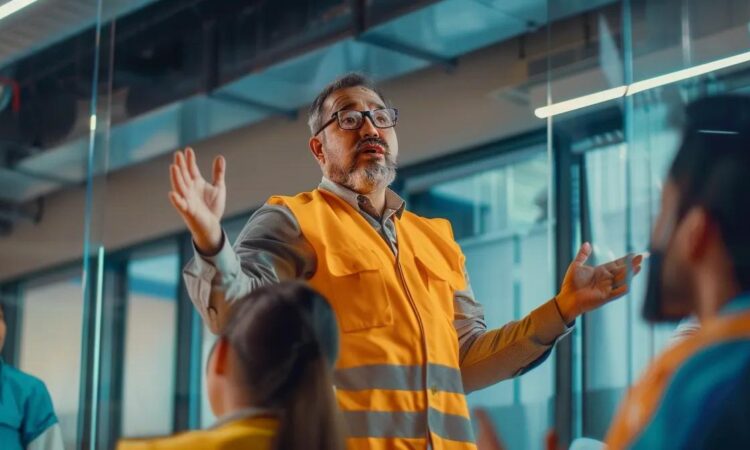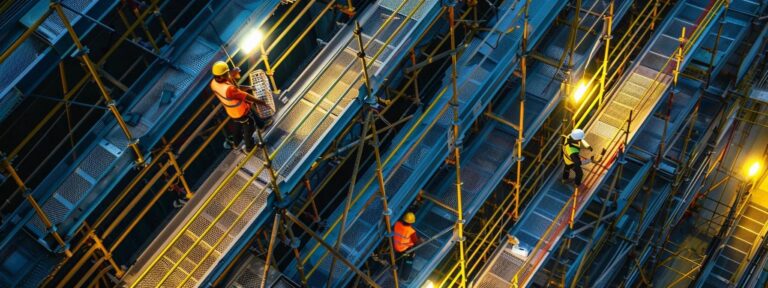The Importance of Comprehensive Fall Protection Training Programs for Workers
In construction, manufacturing, and roofing work, fall protection training teaches risk recognition, hazard controls, and correct use of personal protective equipment such as safety harnesses, shock-absorbing lanyards, and lifeline systems. Aligning with OSHA 29 CFR 1926.502 and ANSI Z359 standards, these programs combine classroom modules, hands-on ladder and scaffold drills, and equipment inspections to reduce accidents by up to 40% according to a 2019 NIOSH study.
Key Takeaways
- Fall protection training combines OSHA and ANSI guidelines with practical drills.
- Reliable equipment supply enhances hands-on learning and real-world application.
- Integrated solutions merge gear installation with on-site training for better retention.
- Evaluation metrics such as incident rates and assessment scores inform continuous improvement.
- Annual refresher courses and digital feedback loops sustain long-term safety gains.
What are the main elements of fall protection training programs for workers?
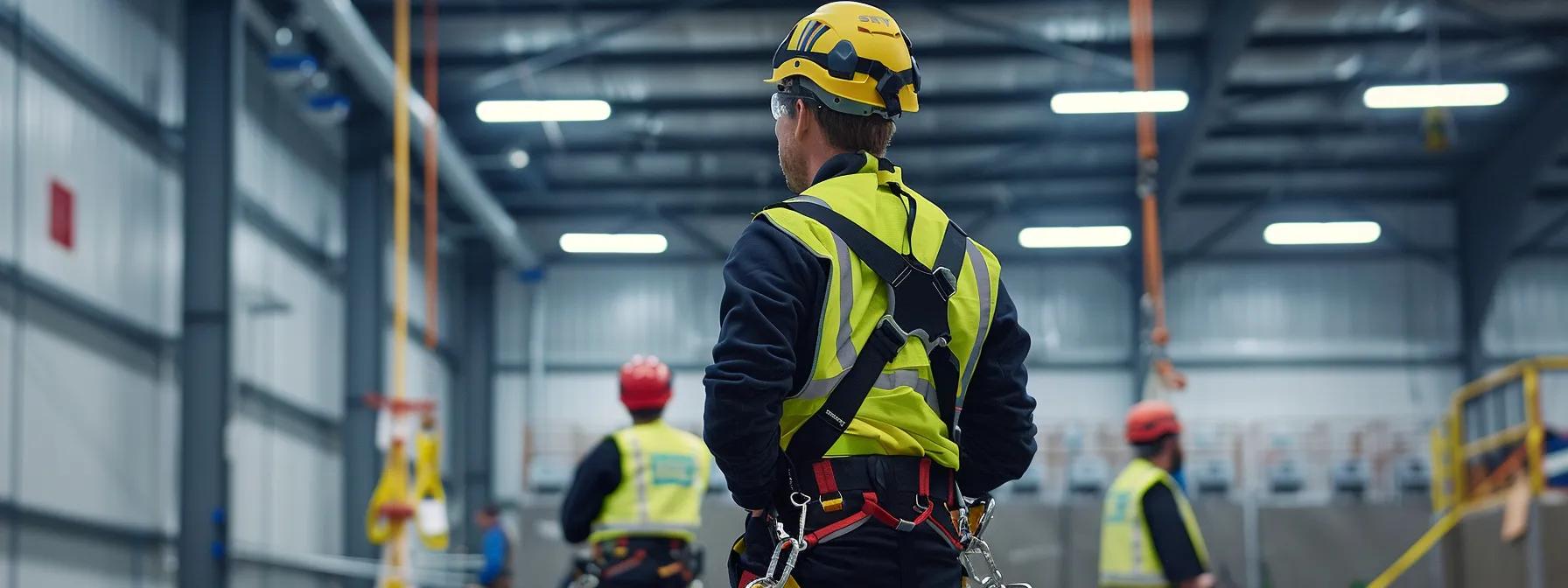
Fall protection training programs for workers define risk assessment, hazard identification, and equipment operation procedures within a structured curriculum. They typically include theoretical modules on regulation, practical hands-on sessions using carabiners, wire rope lifelines, and shock-absorbing lanyards, plus scenario-based drills simulating edge protection and rooftop rescue. Each element reinforces concepts of anchor point selection, correct webbing inspection, and personal protective equipment donning. To learn more, visit our blog, get a free quote, or explore our about-us and industries-we-serve sections today.
Curricula often reference ANSI Z359 series and OSHA regulation 29 CFR 1926.502, specifying anchorage requirements, training intervals, and fall arrest system criteria. These standards guide content on equipment compatibility, load-bearing calculations, and periodic inspection checklists, with annual maintenance and design installation procedures integrated to ensure compliance. By structuring modules around these authoritative sources, participants gain knowledge that directly translates into safer worksite practices across various industries-we-serve. If you’re interested, get a free quote today. For more details, visit our about-us“>about-us page or check out our blog.
Evaluation components such as written quizzes and practical exams confirm retention of key topics like guardrail systems, ladder systems, and confined space considerations. Trainers employ checklist-based assessments and performance criteria to document each participant’s proficiency in harness fitting, secondary lanyard connection, and emergency rescue planning. This four-phase approach—lecture, demonstration, practice, and assessment—forms the backbone of any robust fall protection training program. For a complete overview of our services, including design installation, please visit our industries-we-serve page. For more information, visit our about-us or blog pages, or get a free quote.
What regulatory standards and safety guidelines govern fall protection?
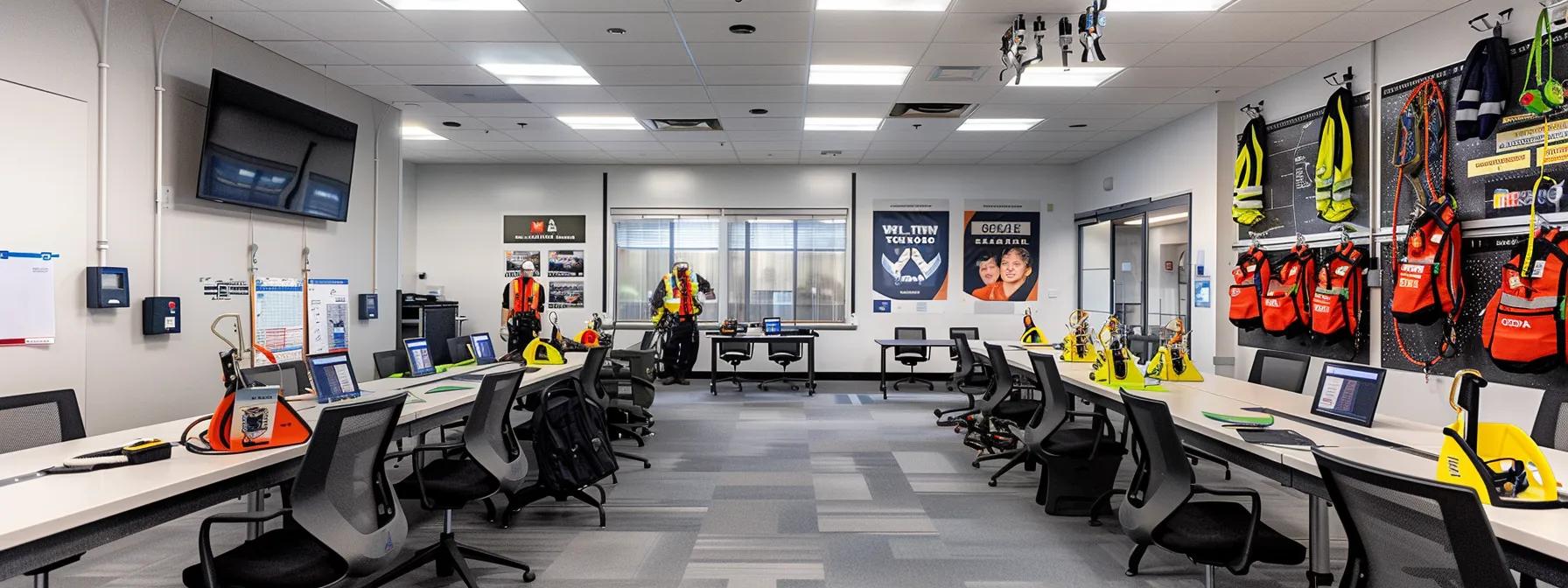
Regulatory standards such as OSHA 29 CFR 1926.502 and ANSI Z359.2 govern fall protection by defining equipment performance, inspection intervals, and training requirements. OSHA mandates fall prevention training before work at heights above 6 feet, while ANSI Z359.2 specifies module durations, instructor credentials, and refresher intervals. Together these guidelines ensure consistent delivery of critical safety information for the industries-we-serve. For more details, visit our blog or learn more about us, or get a free quote.
The American National Standards Institute (ANSI) Z359.1 further details force-reduction criteria, anchorage strength (5,000 lbf minimum), and energy-absorber specifications. Fall protection training references these standards to teach workers how to select compliant safety harnesses, inspect webbing for damage, and verify shock-absorber lanyard deployment. This alignment with recognized benchmarks advances both regulatory compliance and accident reduction. For additional insights, visit our blog or explore the industries-we-serve section. To learn more about us, please visit our about-us page or get a free quote.
Industry best practices from NIOSH and the Construction Safety Council recommend scenario-based drills on raised platforms and mock skylight incidents, supplementing regulatory text with real-world application. Annual refresher training is often required to address emerging technologies such as mobile-anchorage lifelines and intelligent fall arrest sensors. By integrating the latest guidelines, case studies from our blog, and our design installation services, training remains current and impactful. For more information about-us and the industries-we-serve, you can get a free quote.
How can comprehensive fall protection training programs be implemented effectively?
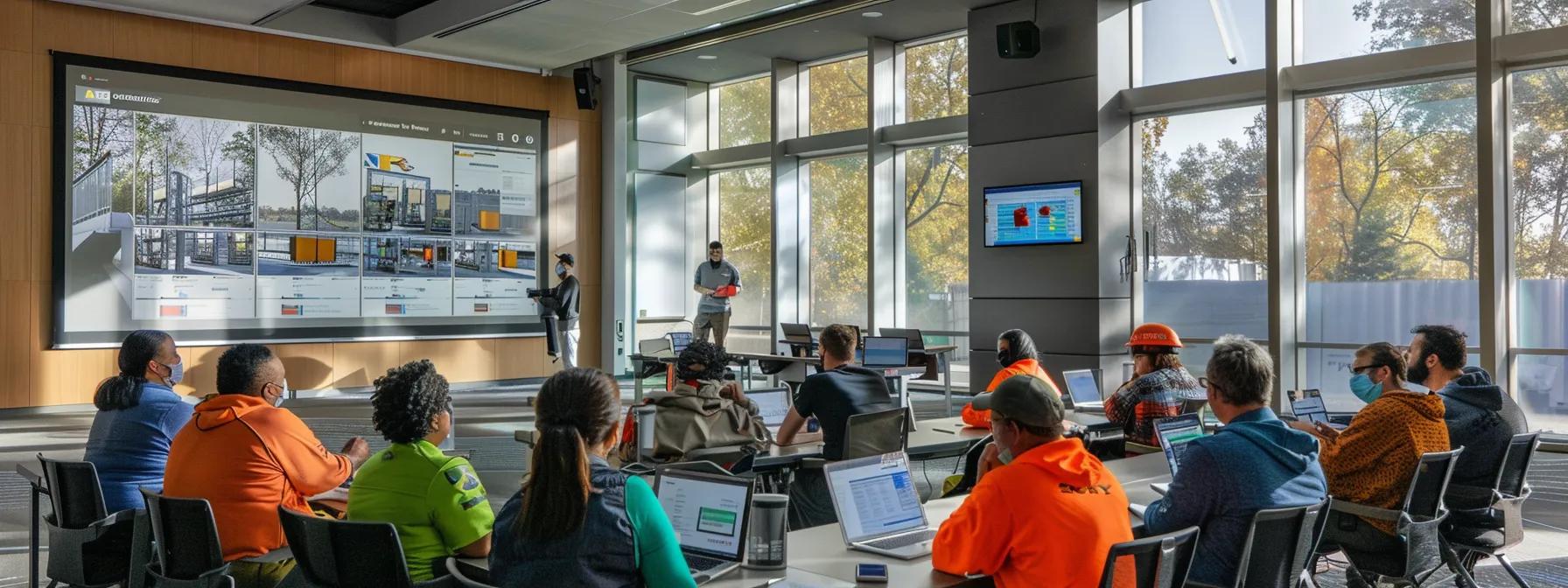
Effective implementation begins with a needs assessment that identifies worksite hazards, employee skill gaps, and equipment inventory levels. This assessment informs curriculum design, ensuring modules on wire rope inspection, guardrail systems, and personal fall arrest system donning match specific operational risks across the industries-we-serve. Tailored training increases engagement and retention. For more information, visit our blog, check our about-us page, or get a free quote.
Key stakeholders—safety managers, certified trainers, and site supervisors—collaborate to schedule classroom sessions, hands-on equipment labs with design installation, and mobile rig demonstrations. Utilizing a blend of in-person workshops and online safety training platforms to support industries-we-serve, employers can accommodate shift workers and remote crews. This hybrid approach also supports recordkeeping for OSHA audits and internal audits. For more information, visit our about-us page or check out our blog. To get a free quote, contact us today.
Evaluation of progress uses both formative checks during drills and summative assessments at program completion. Written quizzes test knowledge of arc flash hazards and load-bearing calculations, while practical exams measure proper harness hook-up, fall distance clearance, and anchor point verification. Exit interviews gather participant feedback, guiding continuous improvement of training content. For more insights, visit our blog or learn more about us in the about-us section. You can get a free quote and explore our design installation services. We cater to various sectors through our industries-we-serve.
Steps to implement fall protection training programs are listed below.
- Conduct a worksite hazard and equipment inventory assessment
- Develop a curriculum aligned with OSHA and ANSI Z359 standards
- Schedule combined classroom, online, and hands-on sessions
- Engage certified instructors and site supervisors for oversight
- Evaluate knowledge and skills through quizzes and practical drills
- Gather participant feedback and update modules annually
By following these steps, organizations ensure training addresses actual workplace risks, drives compliance, and fosters a safety culture where every worker understands fall arrest procedures and prevention tactics. For more information, visit our about-us, explore the industries-we-serve section, read our blog, or get a free quote.
How does fall protection equipment supply impact training outcomes?
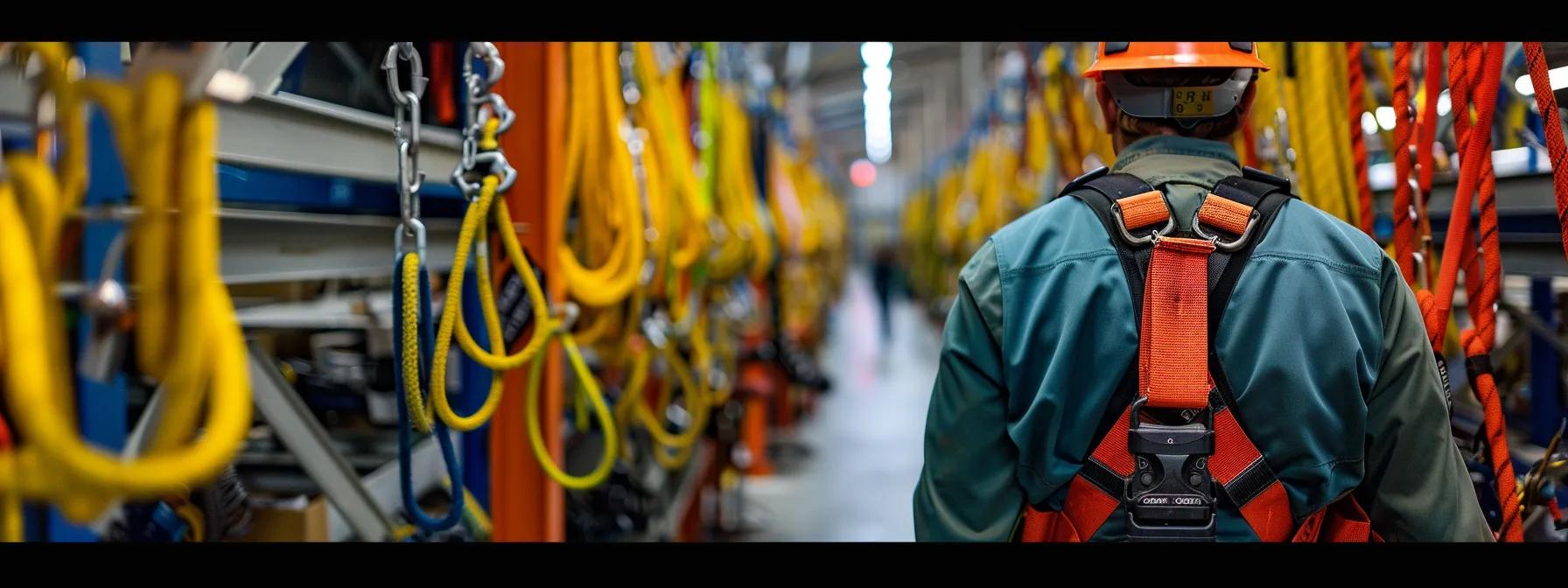
Fall protection equipment supply directly affects training effectiveness by determining whether participants practice with the same harnesses, anchors, and lanyards used on site. Consistent access to compliant gear—CEN-rated connectors, ANSI-certified safety harnesses, and beam anchors—reinforces proper donning techniques and self-inspection routines. Shortages or mismatched equipment can undermine hands-on modules. For more insights, visit our blog or get a free quote to ensure you have the right gear.
Procurement teams must partner with reputable vendors to source equipment that meets ANSI Z359.14 shock-absorber standards and OSHA criteria through expert design installation. Bulk purchases of full-body harnesses, retractable lifelines, and anchor points enable integrated drills on ladders, scaffolds, and mezzanine edges. When training uses actual worksite gear, participants gain confidence and competence in routine inspections and rescue planning. To get a free quote, contact us today.
In addition to equipment quality, logistics—inventory control, storage conditions, and calibration intervals—shape training reliability. Proper storage avoids exposure of webbing to ultraviolet light or chemical vapors, while scheduled inspection tags maintain accountability. By aligning supply chain processes with training schedules, organizations prevent delays and ensure every session delivers maximum practical value.
The table below compares equipment supply factors and their impact on training modules.
| Equipment Factor | Training Impact | Best Practice |
|---|---|---|
| Certified Harnesses | Improves real-world fit and inspection skills | Maintain minimum 10% reserve stock |
| Shock-Absorbing Lanyards | Demonstrates energy absorber function under load | Rotate lanyards quarterly during drills |
| Anchor Connectors | Enables anchor point selection exercises | Provide beam, parapet, and horizontal lifelines |
| Storage & Inspection Tags | Supports equipment tracking and compliance audits | Use color-coded monthly inspection |
Ensuring reliable equipment supply with these best practices not only enhances training realism but also improves on-the-job adherence to inspection and maintenance routines.
How do industrial fall protection solutions integrate training and equipment?
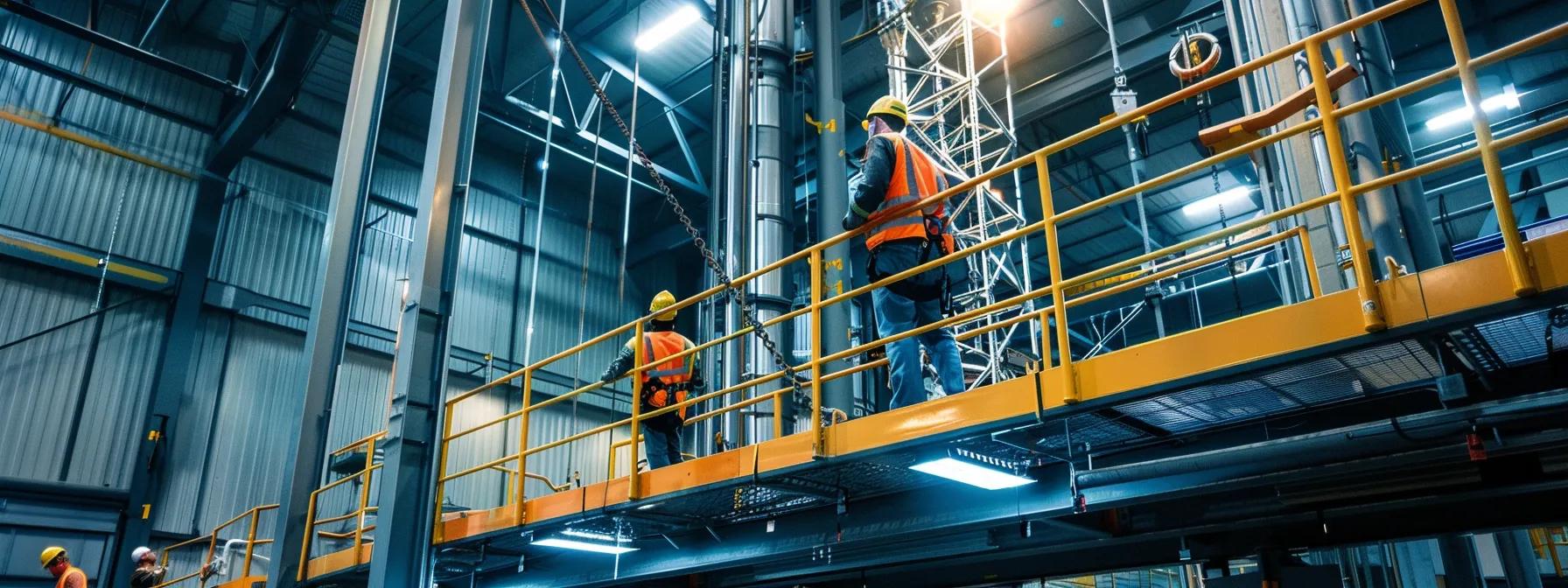
Industrial fall protection solutions integrate training and equipment by designing turnkey systems where lifeline systems, roof edge protection, and gate-style guardrails are installed alongside operator instruction. For example, rooftop guardrail installations on loading docks pair with drills on secure anchor installation and ladder transition procedures. This integrated approach embeds learning directly into daily workflows.
Leading providers offer turnkey services that include site assessment, equipment supply, installation of cable-based horizontal lifelines, and on-site training for both installers and end users. Technician and worker training covers system layout, tension calculations for cable lifelines, and emergency rescue planning. When installers and end users collaborate during deployment, knowledge transfer occurs naturally.
Some organizations deploy smart sensor-enabled connectors that log attachment data and alert trainers to improper connections. These digital solutions generate after-action reports that feed back into refresher modules, creating a continuous improvement loop. By merging equipment innovation with real-time feedback, integrated solutions elevate both safety performance and training effectiveness.
How can the effectiveness of fall protection training programs be evaluated?

Effectiveness of fall protection training is evaluated by tracking leading and lagging indicators such as incident rates, near-miss reports, and participant assessment scores. OSHA reports suggest worksites with annual refresher courses see a 30% reduction in fall-related incidents over three years. Combining these metrics with safety observation scores yields a comprehensive performance picture.
Organizations also employ Kirkpatrick’s Four-Level Training Evaluation Model: reaction, learning, behavior, and results. Post-course surveys measure trainee satisfaction and perceived relevance, written tests and practical exams assess knowledge gain, field audits observe behavior change, and incident statistics quantify results. This model ensures training effectiveness is measured from multiple angles.
Continuous improvement processes leverage evaluation data to refine curriculum, update equipment lists, and adjust delivery methods. For instance, if audits reveal improper anchorage selection persists, focused refresher modules on anchor point criteria are added. Through iterative evaluation and program adjustments, companies sustain high safety standards and foster a culture of constant learning.
The table below summarizes key evaluation metrics and their application.
| Metric | Measurement Method | Improvement Action |
|---|---|---|
| Incident Rate | OSHA 300 logs and near-miss reports | Increase refresher frequency |
| Assessment Scores | Written exams and practical drills | Enhance weak module content |
| Behavior Observations | Field safety audits | Conduct on-site coaching |
| Training Satisfaction | Post-course surveys | Adjust delivery and materials |
Evaluating training programs with these metrics enables data-driven decisions that elevate both safety outcomes and employee engagement.
What frequency of refresher training do OSHA standards require?
OSHA recommends annual refresher training, or sooner if workplace conditions change.
How long should a typical fall protection training session last?
Sessions often last 4–8 hours, balancing theory, hands-on drills, and assessments.
Can online modules replace hands-on fall protection training?
Online modules can supplement but not replace mandatory live practical equipment drills.
Who is qualified to serve as a fall protection instructor?
Instructors must be certified safety professionals with ANSI Z359 trainer credentials and field experience.
What documentation is required after completing fall protection training?
Training records must include participant names, dates, curriculum covered, and assessment results.
Comprehensive fall protection training programs integrate regulatory standards, hands-on practice, and reliable equipment supply to reduce workplace incidents by over 30%. Effective implementation relies on needs assessments, blended delivery methods, and stakeholder collaboration. Continuous evaluation using incident metrics and learner feedback drives program refinement and sustained safety improvements. Organizations that invest in robust training cultivates a safety culture and protects their most valuable asset—the workers.

